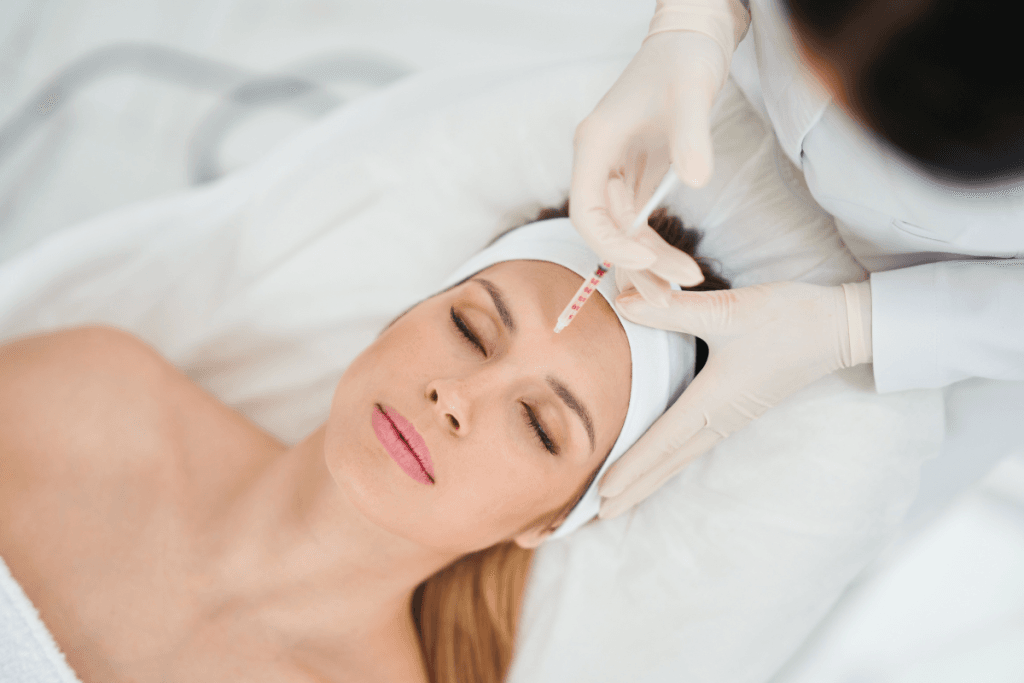Dysport injections have become a trusted option for healthcare professionals looking to provide both cosmetic and therapeutic solutions to their patients. As a botulinum toxin type A treatment, Dysport is commonly compared to Botox due to its similar mechanism of action. However, many clinicians find Dysport beneficial because of its faster onset, wider diffusion, and cost-effectiveness for larger treatment areas.
Understanding what Dysport is and how it differs from Botox is essential for practitioners looking to optimize patient outcomes. In clinical practice, Dysport is widely used to smooth wrinkles, treat muscle spasticity, and manage conditions like cervical dystonia. The growing demand for non-surgical aesthetic procedures and neuromuscular treatments makes it a valuable addition to any medical or aesthetic practice.
What Is Dysport and How Does It Work?
For healthcare providers considering Dysport as a treatment option, it is important to understand what Dysport is and how it works. Dysport is an injectable neuromodulator derived from botulinum toxin type A. It functions by temporarily inhibiting nerve signals in targeted muscles, preventing excessive contractions that cause wrinkles or muscular disorders.
One of Dysport’s key advantages over Botox is its faster onset time. Many patients begin noticing improvements within 24 to 48 hours, compared to Botox, which can take three to seven days. However, how long does Dysport take to work varies based on patient metabolism, dosage, and injection technique. The effects typically last between three to four months, making it a reliable option for long-term treatment plans.
Key Applications of Dysport Injections
From smoothing dynamic wrinkles to managing muscle disorders, Dysport is widely used in aesthetics and therapeutic applications. Here’s a closer look at its key uses:
Aesthetic Uses
In the field of medical aesthetics, Dysport is primarily used to reduce dynamic wrinkles and restore a youthful appearance. Some of the most common cosmetic applications include:
- Glabellar Lines: Dysport is FDA-approved for moderate to severe frown lines between the eyebrows.
- Forehead Wrinkles: Due to its wider diffusion, Dysport can smooth forehead lines with fewer injections.
- Crow’s Feet: The natural spread of Dysport makes it ideal for delicate areas around the eyes.
- Jawline Slimming: Dysport can be used to reduce the size of the masseter muscles, creating a more contoured facial shape.
Medical Applications
Beyond aesthetics, Dysport injections play an important role in neurology, orthopedics, and physical rehabilitation. The most notable therapeutic uses include:
- Cervical Dystonia: Dysport is FDA-approved for managing involuntary neck muscle contractions.
- Upper Limb Spasticity: Patients with stroke-related spasticity or cerebral palsy often benefit from Dysport’s muscle-relaxing effects.
- Hyperhidrosis: Some providers use Dysport off-label to treat excessive sweating in areas such as the underarms and palms.
Dysport vs. Botox: Key Differences for Clinicians
While both Dysport and Botox contain botulinum toxin type A, they differ in terms of formulation, diffusion, and dosage requirements. One of the biggest distinctions is that Dysport has a lower molecular weight, allowing it to spread more easily across larger treatment areas. This makes it particularly useful for forehead wrinkles and crow’s feet, where broader coverage is needed.
Another factor healthcare providers should consider is how long Dysport takes to work compared to Botox. Dysport begins working within one to two days, whereas Botox may take up to a week. This faster onset can be beneficial for patients seeking quick results before an event or special occasion.
When comparing Dysport and Botox in terms of cost, practitioners should note that while Dysport cost per unit is generally lower than Botox, the required dosage may be higher. This is due to differences in potency measurement between the two products. Educating patients about these nuances can help set realistic expectations.
Understanding Dysport Cost and Pricing Considerations
For clinics offering Dysport injections, pricing is a crucial consideration. While Dysport is often priced lower per unit than Botox, providers must calculate the total treatment cost based on required dosages.
Several factors influence Dysport cost, including:
- Dosage Requirements: Dysport typically requires more units than Botox to achieve similar results, though pricing per unit is often more affordable.
- Supplier Discounts: Many aesthetic practices benefit from bulk purchasing to lower costs.
- Treatment Area: The cost of Dysport varies depending on whether it is used for cosmetic or medical applications.
Despite requiring more units per session, Dysport remains a cost-effective solution for treating larger areas due to its natural diffusion properties.
Potential Dysport Side Effects and Safety Considerations
Although Dysport botox injections have a well-documented safety profile, it is essential to discuss potential risks with patients. The most common Dysport side effects include:
- Temporary bruising or swelling at injection sites
- Mild headaches or flu-like symptoms
- Eyelid drooping (ptosis) if the product spreads beyond the intended area
- Muscle weakness in unintended areas if dosing is incorrect
Proper patient selection, injection techniques, and post-treatment care can minimize adverse effects. Practitioners should also educate patients about the difference between Botox and Dysport, ensuring they understand expected outcomes and potential risks.
How Long Does Dysport Last?
For most patients, the injections provide results lasting three to four months, depending on individual factors. Several elements impact longevity, including:
- Patient Metabolism: Faster metabolic rates may cause the toxin to break down more quickly.
- Injection Technique: Proper placement and dilution ensure extended efficacy.
- Treatment Frequency: Patients receiving regular Dysport treatments may experience longer-lasting results over time.
By setting realistic expectations, providers can help patients maintain consistent, high-quality results with Dysport.
Takeaways
For medical professionals, Dysport injections offer a versatile and cost-effective alternative to Botox for both aesthetic and therapeutic use. With faster onset times, broader diffusion, and competitive pricing, Dysport can be a valuable addition to any clinic’s treatment offerings.
Understanding what Dysport is, its cost structure, side effects, and duration allows providers to make informed decisions when recommending treatments. Whether for facial rejuvenation or neuromuscular disorders, Dysport remains a reliable choice for enhancing patient outcomes and expanding practice capabilities.
Where to Learn More About Dysport
For more detailed information about Dysport, including its mechanism of action, cost considerations, and potential side effects, visit our Dysport Product Page. This resource provides essential insights into its role in aesthetic and medical applications, along with expert guidance on dosage, administration techniques, and patient selection criteria.
For further assistance, professional training programs and industry best practices are available to help healthcare providers enhance their Dysport treatment strategies. You can also consult with medical experts or product specialists to determine how Dysport fits into your clinic’s treatment portfolio and whether it is the right option for your patients’ aesthetic or therapeutic needs.
Frequently Asked Questions (FAQs)
How long does Dysport take to work?
Most patients see visible results within 24 to 48 hours, though full effects develop over a week.
How much does Dysport cost compared to Botox?
While Dysport cost per unit is lower than Botox, more units may be required to achieve the same effect.
Can I use Botox and Dysport interchangeably?
Although both products work similarly, their differences in diffusion, onset, and potency require careful adjustments in dosing and application.






